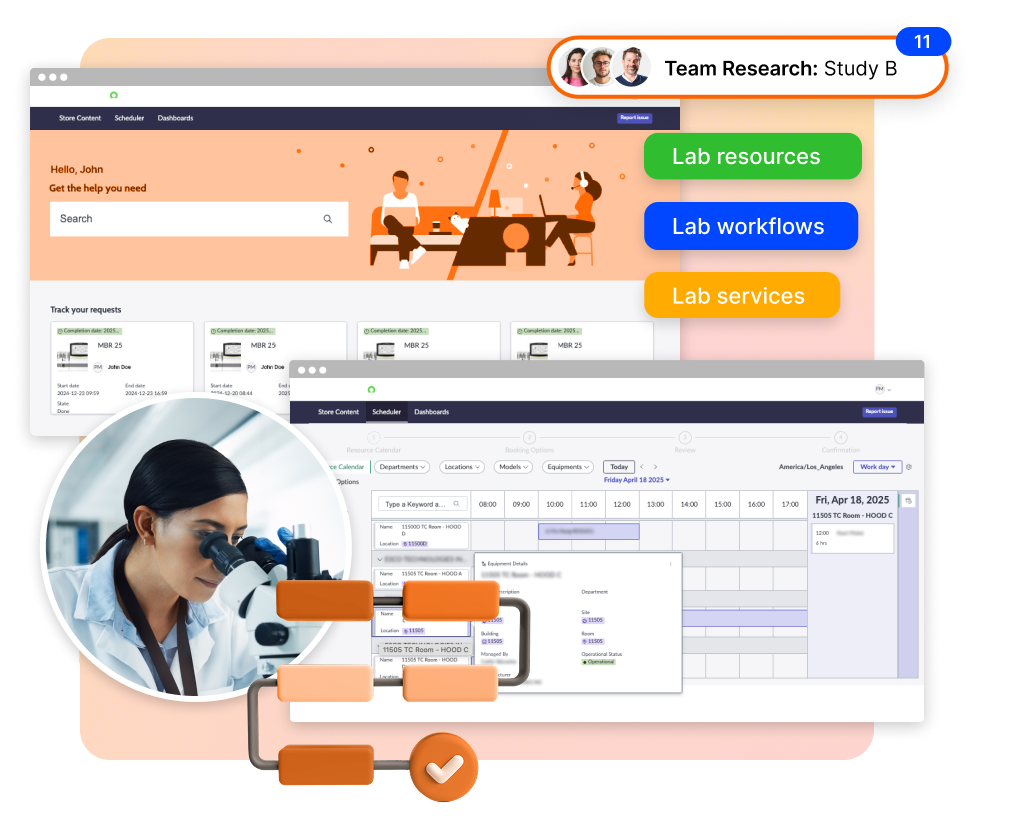In laboratories of all kinds—clinical, academic, industrial, and beyond—the ability to deliver accurate results quickly and consistently hinges on well-designed workflows. Yet, many labs still struggle with bottlenecks, redundant tasks, and manual processes that not only slow things down but also introduce unnecessary risks. So, how can labs work smarter, not harder?
This guide explores proven strategies to streamline laboratory workflows, real-world examples of success, and practical advice for applying these principles in your own setting.
1. Start with the basics: SOPs that work for people
Standard Operating Procedures (SOPs) are foundational, but often underused or poorly maintained. When they’re intuitive and actively integrated into daily routines, they become powerful tools for consistency and efficiency.
- A biopharma lab in Switzerland serves as a great example: by updating and re-training staff on its sample prep protocols, they reduced repeat testing by 25%. This wasn’t a high-tech fix—it was simply making sure everyone followed a clean, well-written process.

2. Improve physical layouts to reduce friction
Lab workflow isn’t just about software. The way people and materials move through physical space impacts speed and accuracy. A food safety lab cut workflow time by 10 minutes per cycle just by relocating key equipment like centrifuges.
Mapping out frequent workflows and then adjusting layout to reduce backtracking or traffic jams can lead to surprising gains.
3. Make your data do more
Collecting data is one thing; using it effectively is another. Labs with a centralized view of asset status, service schedules, and usage data can shift from reactive to proactive.
- This was the case for a Canadian public health lab that reduced equipment downtime by 30% after implementing a centralized maintenance platform.
Systems that pull data from different tools into a single dashboard—like those designed by scientist-first platforms such as newLab®—help turn operational noise into clear, actionable insight.

4. Save time on the admin that slows science down
Booking resources, chasing approvals, tracking issues—these tasks eat into time that should be spent on actual research. Labs that move from scattered emails and sticky notes to structured, centralized request systems tend to see immediate gains.
These platforms not only speed up workflows but also create transparency and accountability, helping teams stay aligned.

5. Automate the tasks that need it
Not everything needs automation, but when applied to high-volume or repetitive tasks—like sample tracking or data entry—it can have a big impact. The key is to target the pain points where manual effort creates drag or introduces risk.
Barcode scanning, pipetting automation, and experiment monitoring dashboards are simple starting points. What matters is choosing the right tool for the job, not the flashiest one.
6. Integration over replacement
Many labs already use tools like LIMS, ELNs, and asset trackers. The real opportunity is often in connecting them. One R&D division layered an orchestration platform—similar to newLab®—across its existing tools, creating a single source of truth without replacing any system.
The result? Fewer silos, cleaner data, and faster decisions. Integration allows teams to modernize gradually while preserving their core infrastructure. Improving lab workflows isn’t about adding more—it’s about removing what gets in the way. The strategies here are practical, often low-cost, and adaptable across sectors.
Platforms like newLab® exist to quietly support these changes. By bringing together scheduling, asset visibility, and service automation in one place, they enable labs to focus on what matters: science.
We hope this guide has given you ideas and inspiration to take a fresh look at how your lab operates—and maybe even find a few quick wins to build on today.



